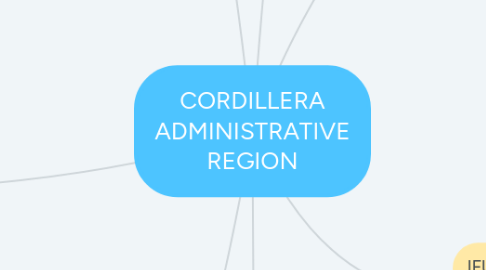CORDILLERA ADMINISTRATIVE REGION
von Inah San Antonio

1. KALINGA
1.1. A glance of the Philippine map will easily reveal the similarity of the physiography of Kalinga to that of a bust of a man akin to former President Ferdinand E. Marcos. The province’s geographic feature is charcterized in the western portion by sharp crested interlinking peaks of the steep slope, isolated flat lands, plateaus, and valleys. The eastern portion has generally rolling, gradually sloping foothills. With interlocking wide tracks of flat lands and flood plains along its main drainage system, this rare geography interposes a great role expected of the province in national development pursuits.
2. APAYAO
2.1. The province of Apayao boasts its own collection of natural wonders that are otherwise not found in the rest of the Cordilleras. Little wonder that it has been dubbed as “Cordillera’s Last Frontier for Nature Richness.” Here, underground rivers, majestic waterfalls, magnificent lakes hug a unique land that is replete with captivating caves, picture-pretty parks, and exotic wildlife. Delve deep into underwater splendor being offered by Malabisin Lake and Underground River as well as Waton Subterranean River. Come up the surface to gape at fish and wildlife, which are highly visible in the unpolluted waters of Apayao River. And do stop to admire the myriad of picturesque waterfalls of varying sizes that are found along the river. Commune with nature and marvel at wondrous sights at the Agamata, Agora, and Anag-Sicapo wildlife sanctuaries. Scale the heights of Mount Solo, the highest peak in Apayao. Stumble into untold discoveries at Purit, Anganupan, Nalvo, and countless other caves that make Apayao a whole lot more than simply interesting.
3. MOUNTAIN PROVINCE
3.1. Mountain Province is known as the “Weaver’s Paradise” due to the presence of various weaving centers sporting different designs that bespeak of the province’s cultural heritage. This was a province that practiced the traditional parliamentary/participatory form of governance as evidenced by the presence of the Dap-ay/Ato, a traditional form of governance led by the respected elders in the community.
4. ABRA
4.1. Abra is a landlocked province of the Philippines in the Cordillera Administrative Region in Luzon.
5. BENGUET
5.1. Benguet is the roof of Northern Luzon. It straddles on the Cordillera mountain ranges. Mt. Pulag, second highest mountain in the Philippines, and Halsema Highway, the highest mountain highway system in the country, are located in Benguet. Today it holds claim as the “Salad Bowl of the Philippines” because of the huge production of upland vegetables.
6. IFUGAO
6.1. Ifugao is home to a thriving ancient culture and host to the famous rice terraces carved from the base of the mountainsides to the top, which appear to be massive green stairways reaching to the sky. The famous terraces had been inscribed in UNESCO’s World Heritage List in 1995 as “a continuing cultural landscape” and likewise considered by the U.S. Association of Civil Engineers as an engineering marvel built by unschooled and free men not of slave labor. It was a credit to the inherent wisdom of the Ifugao forefathers that a forest and watershed management system was instituted to help sustain the terraces that serve as the basic food source of the sturdy Ifugaos. The Ifugao native huts could probably be among the world’s first prefabricated houses that do not use a single nail or metal to fasten their parts.
7. BAGUIO
7.1. Baguio is the gateway to the wonders of Northern Luzon: the calm beaches of La Union; the fabled Hundred Islands of Pangasinan; the world famous Banaue Rice Terraces in Ifugao; the ancient churches, Spanish influenced houses, historical and cultural relics of Ilocos Sur and Ilocos Norte, the Kabayan of the tribes of Benguet, Mountain Province, Ifugao, Kalinga, Apayao, and Abra.


